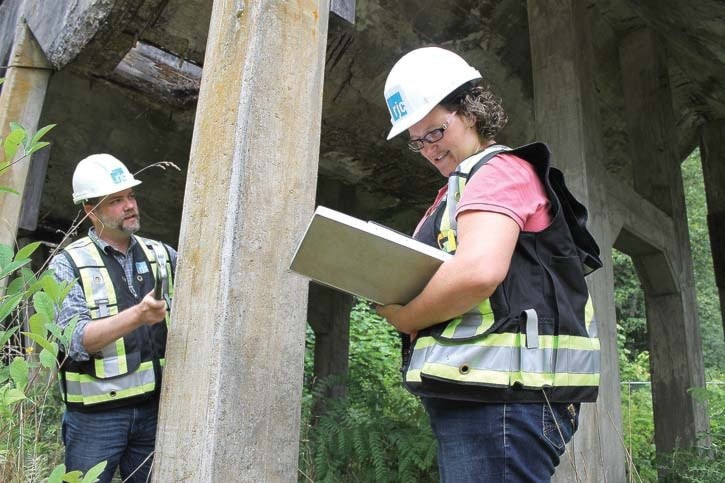A new engineering study will answer an important question for volunteers looking to save one of Nanaimo’s last standing coal mine relics: just how much will it cost to fix it?
The Friends of Morden Mine Society has hired engineers Read Jones Christoffersen to determine the state of Nanaimo’s 101-year-old Morden Mine head frame and tipple and the cost for repairs.
According to Eric Ricker, co-president of the Morden Mine society, the seven-storey high concrete structure is one of only two remaining in North America and a memorial to Vancouver Island’s coal mining past, but it’s on borrowed time. The concrete has deteriorated and material is falling off.
Engineers were out at the site earlier this month, testing how sound the concrete columns are. The study, paid for with $15,000 from the regional district and $7,500 from the City of Nanaimo, will look at what repairs need to be done and where.
“It’s a big step along the way but that’s all it is, a step along the way,” said Ricker. “It’s sort of a sequence thing. You have to do this study as part of the progression.”
The dream is to see the site opened with a restored head frame and tipple and interpretive centre that memorializes Vancouver Island’s coal mining era. The structure “is all that’s left that people can see,” Ricker said.
“From a historical standpoint, this is what you’ve got left to work with to educate the public ... and to memorialize the people who worked in the industry. Once this is gone, there is nothing else to work with.”
RJC associate Michael Blackman, who is doing the study, said he thinks the biggest challenge ahead will be funding. The structure is needs a lot of work, but he said he believes it can be saved.
“To be able to help protect something that tells the story of how British Columbia came to be and how Nanaimo came to be is a pretty cool opportunity and then you get to see just how they built something, what they imagined and how they put it together 100 years ago,” he said.
The engineering work was recommended in a B.C. government study done in 2013 although the province has not agreed to fund this next step. The results are expected this fall.
